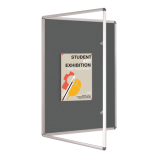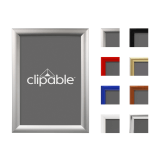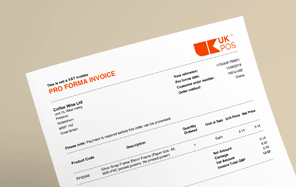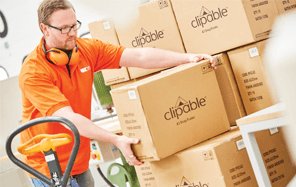Enhancing Communication in Schools with Effective Display Solutions

Clear, timely communication is at the heart of every well-run school. The way we communicate within educational settings plays a crucial role in maintaining organisation, engagement, and a positive environment. Whether that’s reminding pupils of an upcoming assembly, keeping parents informed, or sharing staff notices.
This article looks at how signage in schools can greatly improve communication. It explains how they make sure people see, understand, and act on important messages.
Why Communication Tools Matter in Schools
Schools are busy places with diverse audiences. Pupils, staff, parents, governors, visitors, and contractors all need access to different kinds of information. From lunch menus to exam schedules, safety notices to club updates, it is important to share information clearly.
What might need to be communicated in education settings?
The following are just a handful of examples:
- Exam and holiday dates
- School trip sign-up deadlines
- Policies and rule reminders
- Safety information
- Promote special events like sports days, conferences and plays
Effective communication in schools:
- Reduces misunderstandings and missed messages
- Supports safeguarding by clearly displaying key information
- Encourages student involvement through visible promotion of events and opportunities
- Reinforces a sense of school identity and community
While emails and apps are useful, not everyone checks digital channels regularly. That is where well-placed physical displays can complement your communication strategy and ensure nothing is missed.
Wall-Mounted Noticeboards: Reliable and Versatile
Wall-mounted noticeboards are enclosed display boards designed for permanent or semi-permanent messages. They're often made with fabric or cork backing - great for pinning up printed materials, student work, and school messages.
Benefits include:
- Visibility: Place in high-traffic areas like corridors, staff rooms, or reception halls. This ensures they're seen by the right people.
- Organisation: Keep related content grouped together, such as safeguarding information, student council updates, or key term dates.
- Durability: Lockable boards are ideal for schools, protecting content from tampering.
- Customisation: Available in a variety of colours, sizes, and finishes to match your school’s branding or interior decor.

Example: A primary school might use a wall-mounted board by the entrance to share lunch menus and upcoming school trips with parents. In a secondary school, use a safeguarding noticeboard near student services. This can ensure that helpline numbers and policy information are always accessible.
Snap Frame Poster Holders: Fast, Professional Updates
Snap frame poster holders, also known as click frames, are aluminium display frames with front-loading access. You simply snap open the edges, insert your updated poster, and snap it shut. This makes them ideal for regularly changing messages or promotional content.

They are especially useful for:
- Event Promotion: Open evenings, parent-teacher meetings, freshers fairs, and school performances benefit from prominent posters in shared spaces.
- Health & Safety Notices: Ensure fire evacuation plans, safeguarding leads, and first-aid locations are clearly displayed and easy to update.
- Menus & Schedules: Display weekly meal plans, exam timetables, or extracurricular club schedules in dining areas or outside classrooms.
Example: A sixth form college might use A3 snap frames in the common room. These frames can help keep students updated on UCAS deadlines, university visits, and guest speaker events. They provide clear reminders where students need them most.
Digital Signage For Schools: Dynamic, Eye-Catching Communication
While traditional displays are highly effective, many schools are also incorporating digital display screens into their communication strategy. These screens allow you to show a rotating stream of content (including images, videos, and slideshows). This makes them ideal for high-traffic areas where attention spans are short but engagement can be high.
Key advantages of digital displays include:
- Real-time updates: Content can be changed instantly to reflect timetable changes, weather alerts, or last-minute announcements.
- Engaging content: Use moving visuals and transitions to capture attention and improve message recall.
- Multi-purpose use: Screens can display welcome messages, news headlines, achievements, or school values all from one device.
Example: A secondary school might place a screen in the reception area to showcase upcoming events, exam dates, photo highlights from recent trips, and achievements like sports results or attendance milestones. This creates a vibrant and informative first impression for both students and visitors.
"96% of students notice digital signage immediately and can recall its content" [1].
Digital screens work especially well when combined with physical displays, reinforcing messages across different formats and touchpoints.
Creating a Communication-Friendly Environment
The effectiveness of your display strategy is not just about the products. It also depends on thoughtful placement, presentation, and accessibility. Here are some practical tips:
- Position strategically: Choose high-footfall areas like entrances, stairwells, dining halls, or outside classrooms.
- Keep displays tidy: Regularly update boards to remove outdated or duplicated material and prevent visual clutter.
- Use consistent formatting: Make use of headers, school colours, and readable fonts to create a coherent and professional look.

- Involve students: Let pupils help design or contribute content to displays, fostering engagement and a sense of ownership.
- Ensure accessibility: Mount displays at suitable heights for children and wheelchair users. Use large fonts, high contrast, and plain language for key information.
Conclusion
In an age of increasing digital communication, physically visible display solutions remain essential tools in education. They help reinforce important messages, celebrate student work, and share updates with staff and parents. They provide visibility and clarity in places where people usually look.
Wall-mounted noticeboards and snap frame poster holders may look simple. However, when used correctly, they can greatly improve communication in a school. From safeguarding notices to school play posters, the right display makes sure your message is seen, understood, and acted upon, by everyone who needs it.
Key Takeaways
- Use display tools to complement digital communication and improve visibility.
- Choose the right product for the purpose, noticeboards for static info, snap frames for quick updates.
- Focus on placement, clarity, and accessibility for maximum effectiveness.
- Keep displays current, tidy, and student-inclusive to boost engagement and relevance.
If you enjoyed this article...↗
Check out our specially-selected product range for education...
-


Lockable Noticeboard
TRN In stockWas: £99.26 From: £77.00 ex. VATView -


Snap Frame 25mm Frame
PFG In stockFrom: £3.20 ex. VATView -

Lockable Snap Frame Silver
PFGT7 In stockFrom: £15.30 ex. VATView
References
1. ‘Digital Signage Statistics 2025’, Mvix, https://www.mvix.com/blog/digital-signage-statistics.























